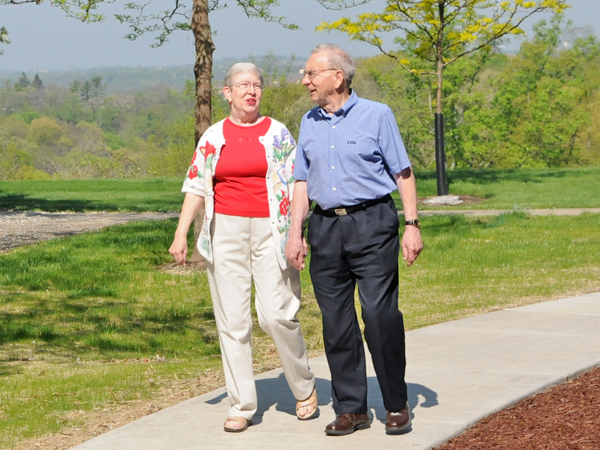Tips to Get Up and Get Moving This Summer

Today’s post was written by Concordia Physical Therapist Assistant Marcy Reott. At Concordia Outpatient Therapy, we have the expertise and resources to help get patients back to life – regardless of age.
Warmer temperatures are finally here! The nicer weather tempts most of us to get out and about after those cold winter months. This makes it a wonderful time of year to start a walking program to help improve our health. Walking is also an excellent activity to help increase cardiovascular tolerance, control weight, decrease blood pressure, help regulate blood sugar for those with diabetes, and more.
However, if you have any significant cardiac or pulmonary conditions, consult your physician prior to starting any workout program. Before beginning a program make sure you have comfortable shoes, breathable clothing, and plenty of water to stay hydrated. Hydration is always important, but especially with increased temperatures and activity.
Starting a walking program can seem challenging, but just getting started is half the battle. Here are a few easy steps to get a program started.
4 Easy Steps to Creating a Walking Program
1) Warm up: Do a few exercises/stretches to get the blood flowing and to help prevent injury. Overhead reach, toe taps, ankle circles, and arm circles are a great start.
2) Start walking: Begin slowly and build your pace to a challenging, yet maintainable, speed.
3) Cool down: Slow you pace and bring your heart rate and breathing back to a normal rate.
4) Stretch: Stretching after a workout can reduce soreness and tightness.
Once you get your program started, you can gradually build it up. Start with timed walk you can tolerate without getting over-fatigued or sore. An example may be only 10 minutes to start. Then every few days or week added time to your program.
This may only consist of a few minutes each time you increase, but over a few weeks will build your walking time to your goal. Example: Day 1 -10 minutes, Day 3 – 15 minutes, 1 week – 20 minutes, and so on until 30 minutes, or your desired goal, is reached. If you take longer to meet you goals, that is not a problem! Everyone starts at different activity levels and tolerance. If at any time you have chest pain, dizziness, shortness of breath, pain, or feel overly tired, stop and consult a physician.
Stretching is a great way to end a workout. It is important when stretching to not bounce, which can cause injury. Static, prolonged holds of 30 seconds or more will help gain flexibility and decrease discomfort from tight muscles. If a particular stretch is painful, do not complete the activity. Pain does not always equal gain and can cause increased discomfort.
If you or a loved one experiences an injury this season or any time, consider Concordia Outpatient Therapy Services. With a prescription from your doctor for physical therapy, we can help with any strengthening, balance, orthopedic, neurological or other recovery needs. You can contact us at 724-352-4535 or visit www.concordiacabot.org and learn more about Outpatient Physical Therapy in Cabot.
Concordia Outpatient Physical Therapy
Here for all your therapy needs, while getting you back to life!
Get Updates From Concordia
There is always a LOT happening at Concordia! Would you like to stay up-to-date with our news and events? Sign up for our monthly e-newsletter here.